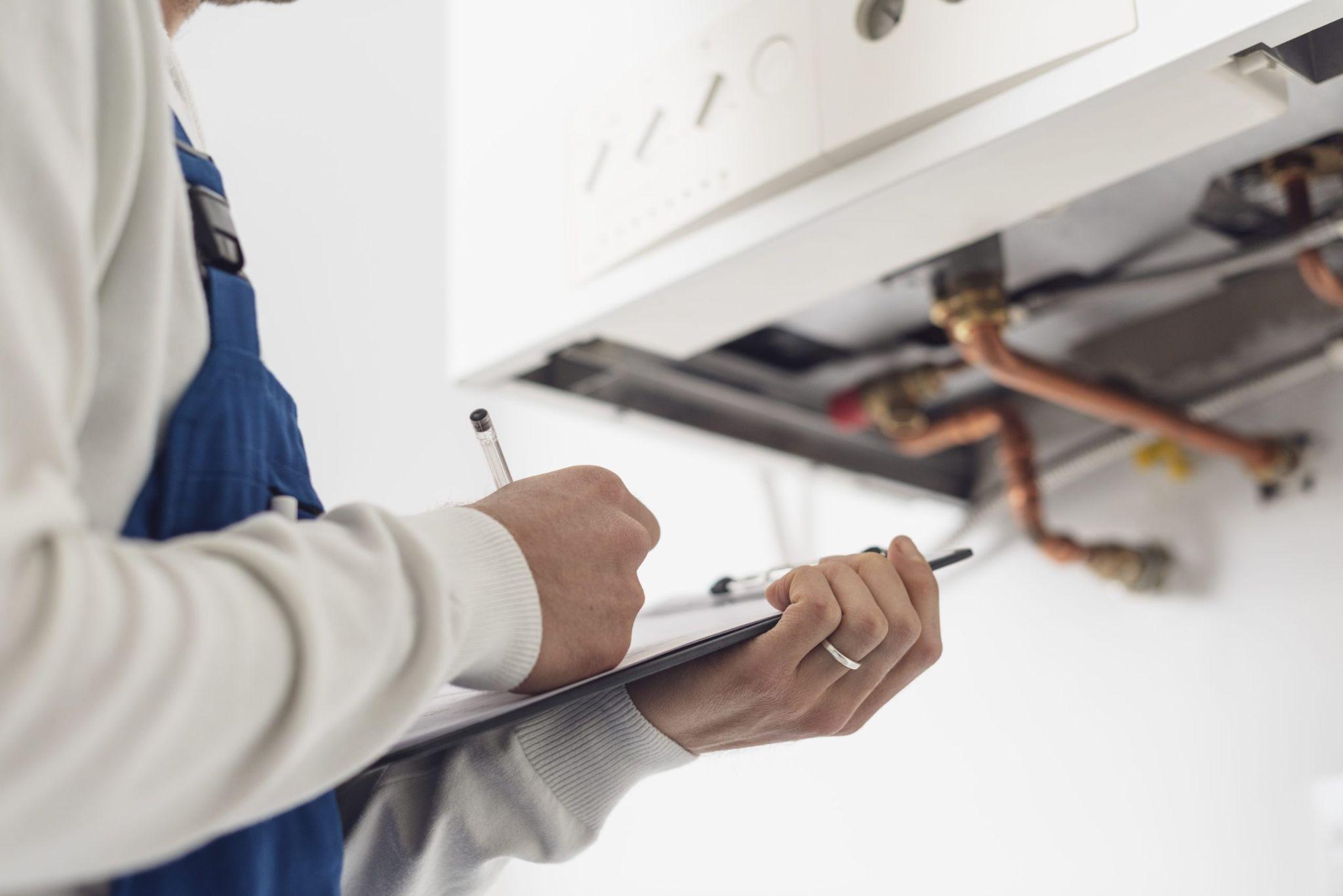Learning
The History of Shoes: Ancient and Early Footwear

An outfit – whether designer or traditional – is considered complete when paired with suitable shoes. Hence, it is safe to say – shoes are the foundation of any outfit.
Apart from serving as a fashion staple, shoes are used for practical purposes like moving safely and comfortably from one place to another and getting ultimate protection from the elements. But did you ever have this thought of what could be the history of shoes? Or perhaps when were shoes invented?
Discover everything about ancient, medieval, and modern shoes in the article.
Brief History of Shoes
Shoes have been with humanity for ages. In fact, the oldest shoes date back about 5,500 years and were found in Vayots Dzor province of Armenia. These shoes were fabricated and stitched from a single piece of leather.
Although the oldest surviving shoes are said to be 550 decades ago, several archeological evidence has proved that shoes’ existence dates back about 42,000 years. East Asians used to wear shoes around 4202 decades ago. So, what did people used to wear before that?
According to a skeleton study conducted by anthropologist Erik Trinkaus, it was noted that humans had slimmer toe bones after wearing shoes than those who used to walk barefoot.
Hence, the study proved that walking barefoot could have been the reason for thicker toe bones. Similarly, foot anatomy and ancient skeleton studies show an evident change in the foot structure (particularly toe bone) between 26,000 and 30,000 years ago.
The timeline was when smaller toe bones started to appear less effective and robust due to the use of footwear. The discovery of a 27,000-year-old Russian skeleton further supported this study.
However, apart from having a small, lesser toe bone, the ankle and foot featured ivory beads as a form of decoration. Hence, it suggested that shoes were worn for both practical purposes and to show the level of status in society.
However, varying footwear shapes and models represent the rich history behind shoes. Let’s start with each model type and era the footwear belonged to.
Ancient Footwear
Sandals
Sandals are raging fashion even today. Such traditional shoe style has a simple covering of a sole attached to the foot with multiple straps and can be made of rope, leather, plastic, straws, or even old tires.
Ancient humans used to consider sandals as an ultimate footwear style because of their versatile usage. Since sandals are suitable for hot, dry climates and rocky areas, they were used by ancients to ensure protection against insects, razor-sharp stones, and hotter surfaces.
Leather sandals also offer better breathability to the foot and ensure a more cooling effect.
Now, let’s go through some history of shoes:
- The Anasazi of the American Southwest used to wear braided, woven, and flexible sandals between 8,000 and 10,000 years ago.
- The Japanese used to wear wood-soled sandals called “Geta” with socks for traditional appeal. Even after 2,000 years, individuals in Japan still wear geta with traditional dresses to keep their feet elevated from mud or damp surfaces.
- Ancient Indians wore open sandals made from wood with a knob in between the big and second toe, also called “Paduka” to keep their feet elevated from the surface. Padukas were worn for more than 5,000 years by Ancient Indians.
- Ancient Egypt had a unique way of determining the status of a person in society – by wearing sandals. In fact, the status symbol by elite individuals was displayed by sandals. However, the use of sandals indoors was not practised by ancient Egyptians. Even the Pharaoh did not consider wearing sandals indoors. Sandals were worn by those who could afford them.
- In the 4th century BCE, Greece developed in terms of wealth, science, arts, and sports. Thus, the development led to the creation of various sandal styles, which were made to depict the status of individuals or for various occasions.
- Did you know the term sandal originated from the Latin word “vandalism”? Romans also had certain restrictions on the use of sandals. However, Roman-style sandals gain quite popularity in the 20th century and are still popular today.
Neolithic Age
Moccasins
Moccasins are made from a single piece of leather and stitched together, closely-held using leather laces. Such footwear styles were often worn for thousands of years by early pioneers and indigenous Americans.
People in the Neolithic age used to wear simple shoes like moccasins until the Middle Ages. Moccasins come in various materials like plain leather or can be decorated with beads to create a beautiful appeal. You can find moccasins in any store today.
Middle Age
Clogs, Pattens, and Sabot
Some experts believe that the Romans used to wear wood-soled shoes over other materials. Clogs were quite popular among the peasants and workers throughout Europe during the Middle Ages. Such medieval footwear ensured better elevation and provided thick, wooden feet protection from mud, dampened ground, razor-sharp stones, and other elements.
Pattens were basically slip-on wood-soled footwear worn during the Middle Ages until Victorian times. The wood sole was closely held to the footwear surface using multiple straps. Most individuals used to wear them outdoor. However, pattens were occasionally worn indoors for walking on wet or cold stone floors.
Sabot was traditional French footwear often worn by factory workers and peasants.
Early Shoe Fashion in Europe
Up until the 19th century, shoes were not made for the right or left foot specifically and rather the same. People used to wear simple shoes like moccasins made from a single material. It was until the high and late Middle Ages that people started incorporating new ideas to craft a distinctive footwear design that displayed the status of the wearer.
The first-ever shoe fashion in Europe appeared in the late 1100s with long, pointed footwear. Poulaine was increasingly popular between the 1300s to 1500s. However, the shoe style was restricted to the elite and higher classes. By the end of the 15th century, poulaine was replaced with a wider shoe option called hornbill or Bearpaw.
During the late 15th century, platform sandals and mules were replaced with high heels. High heels were worn to display to status and wealth of an individual. During the 17th and 18th centuries, laces were displaced with metal buckles and decorated with jewels. Around the mid-1800s, sneaker shoes become more popular among individuals due to the rising popularity of sports activities. Leather boots become even more popular during this timeline.

Learning
First-Time Buyer’s Guide to the UK Property Market

Entering the UK property market as a first-time buyer can feel both exciting and daunting. The process is filled with potential pitfalls and complex decisions, but with the right guidance, it can be navigated smoothly. The estate agents in Yorkshire demystify the journey from the initial decision to buy a home to the moment you step over the threshold of your new property.
Understanding Your Financial Position
The first and perhaps most crucial step in the home-buying process is understanding your financial situation. This includes assessing your savings, income, and current debts. Here’s how you can prepare:
1. Deposit: Generally, you’ll need at least 5% of the property price as a deposit, though aiming for 10% or more can provide better mortgage rates.
2. Income and Expenses: Use a budget planner to assess your monthly income against your expenses. This will help you understand how much you can afford in monthly mortgage repayments.
3. Credit Score: Lenders will evaluate your credit score to determine your mortgage eligibility. So it’s important to have a good credit score, and you should work on it if required.
4. Mortgage Options: Speak to a mortgage advisor to understand different types of mortgages, such as fixed-rate, variable-rate, and help-to-buy schemes.
Getting a Mortgage Agreement in Principle
A Mortgage Agreement in Principle (AIP) is a statement from a lender indicating how much they’ll likely lend you. You will be a more attractive buyer with an AIP as it shows sellers you’re serious and financially prepared.
Deciding What You Want
Before you start viewing properties, it’s essential to know what you’re looking for. Consider the following factors:
1. Location: Proximity to work, schools, public transport, and amenities are key. Research neighbourhoods to find the best fit for your lifestyle.
2. Property Type: Decide whether you want a flat, terraced house, semi-detached, or detached property. Each has its pros and cons.
3. Must-Haves: Make a list of non-negotiables, such as the number of bedrooms, garden size, and parking facilities.
4. Future Proofing: Consider your future needs. Are you planning to start a family? Do you need space for a home office?
Starting the Property Search
With a clear idea of what you’re looking for, you can begin your property search. Here are some tips:
1. Use Online Portals: Websites like Rightmove, Zoopla, and OnTheMarket are excellent starting points. Set up alerts to get notified of new listings that meet your criteria.
2. Visit Estate Agents: Register with local estate agents who can provide insights into the market and inform you of new properties before they’re listed online.
3. Attend Viewings: Don’t rush this part. Visit several properties to get a feel for what’s available in your price range.
Making an Offer
Once you find a property you love, it’s time to make an offer. Here’s how to approach it:
1. Research: Check the selling prices of similar properties in the area to gauge a fair offer.
2. Negotiate: Don’t be afraid to negotiate. The starting point is most usually the asking price.
3. Conditions: You might include conditions in your offer, such as the inclusion of certain fixtures or a specific moving date.
The Legal Process
If your offer is accepted, the legal process begins. You’ll need a solicitor or licensed conveyancer to handle the legalities. Here’s what to expect:
1. Conveyancing: This is the legal transfer of property ownership. Your solicitor will handle this, including conducting searches, dealing with the Land Registry, and transferring the funds.
2. Surveys and Inspections: Arrange for a property survey to check for structural issues. There are different types of surveys, from basic condition reports to full structural surveys.
3. Mortgage Finalisation: Once the survey is complete and satisfactory, your mortgage can be finalised.
4. Exchange of Contracts: This is when the sale becomes legally binding. You’ll pay your deposit at this stage.
5. Completion: On the agreed completion date, the remaining money is transferred, and you receive the keys to your new home.
Moving In
Moving day can be hectic, but planning can ease the stress:
1. Hire a Removal Company: Book a reliable removal company well in advance. Discover the best deals by getting quotes from multiple companies.
2. Pack Strategically: Label your boxes by room and keep essential items accessible.
3. Notify Utilities and Change Address: Inform your utility providers of your move date and update your address with banks, the DVLA, and other important institutions.
Settling In
Get settled. Introduce yourself to the neighbours, familiarise yourself with the local area, and really start to make the place your own.
Here are a few final tips:
1. Safety Checks: Make sure that your smoke alarms and carbon monoxide detectors are working, and make sure that you know where the gas and electricity meters are located.
2. Maintenance Plan: Keep a record of the smooth functioning of your new home with a maintenance schedule, complete with regular checks and seasonal tasks.
3. Personal Touches: Add personal touches to make the space feel like home. This can be from putting up family photos or redoing the decoration in your rooms.
Conclusion
Buying your very first home in the UK is most definitely a milestone, difficult and full of challenges but rewarding in the end. Such a philosophy guides you in understanding finances and knowing what you want to achieve from detailed research, and seeking professional advice that confidently helps you navigate the property market. Yes, the journey may have its hurdles, but in the end—owning your own home—the reward will be worth the effort. Welcome to your new chapter!
SEE ALSO: Conquer the Chaos: Hacks to Clean Your Home in Half the Time
Learning
5 Health Benefits of Regular Pedicures

There’s nothing quite like a pedicure to keep your feet looking and feeling their best, but did you know that pedicures do more than simply enhance the appearance of your feet? Many people don’t realize that regular pedicures can come with a wide range of health benefits that can promote the well-being of your feet, so here are some ways that your routine pedicure keeps both your toenails and feet in the best condition possible!
Smoother Skin
One of the biggest misconceptions about pedicures is that they only cater to and look after your toenails. While you’ll definitely be leaving each session with a fresh coat of nail polish, your pedicure can also do wonders for the health of your skin. Aside from trimming and shaping your nails and cuticles, you’ll notice that your nail technician also dedicates a few steps to the skin of your feet.
After inspecting your feet and looking for any issues or imperfections that may need to be addressed, your technician will work on an exfoliating scrub to remove any dead skin cells. This step may also be aided by a foot file, which can be used to buff away any calluses and other problem areas manually.
Softer Skin
After your nail technician addresses all the problem areas of your feet and removes any unwanted dead skin cells, he or she will often massage in a moisturizing product, such as lotion, cream, or butter, to ensure that your skin is properly moisturized. These products contain skin-loving ingredients that will ensure that your feet have everything they need to look and feel their best so that you can walk out of your pedicure with a renewed sense of confidence.
Healthier Nails
After your pedicure session, your nails will not only look better due to the fresh coat of nail polish, but they’ll also be healthier and stronger. This is because your nail technician takes their time to ensure that your nails are properly looked after through steps that include deep cleaning, nail trimming, nail filing, and cuticle care. All of these things work together to prevent issues like ingrown nails from occurring, all the while improving the appearance of your nails.
Increased Blood Circulation
While the specific steps included in your pedicure will depend on the beauty salon, most pedicures will have a massage step somewhere in the mix. One of the often overlooked benefits of these massages is the increased blood circulation, which can deliver more nutrients and oxygen to your feet and nails, promoting their health and appearance. Aside from that, better blood flow means reduced tension and soreness, as well as better distributed heat throughout your body.
Reduced Infections
A significant amount of dirt and bacteria can build up on your feet without you even realizing it, but pedicures can be a great way to prevent these from happening in the first place. The exfoliation step of a pedicure removes dead skin cells as well as all the debris that may have accumulated underneath, and the deep cleaning of your toenails and cuticles also gets rid of any impurities that may have slipped beneath them, which can stop infections from happening.
These are some of the many health benefits that you can look forward to at your next pedicure appointment. However, it’s worth noting that you need to book regular sessions to truly reap all the rewards. This can be difficult, especially when you don’t feel like driving to your nearest nail salon after a long day, but the good news is that you can enjoy the salon experience in the comfort of your own home with a home pedicure service.
Learning
Commercial Boiler Installation Services London

For businesses in the bustling city of London, having a reliable heating system is crucial. Whether you’re opening a new office, expanding your current premises, or simply upgrading an outdated system, commercial boiler installation services for businesses in London are essential to ensure your operations run smoothly and efficiently. Proper installation and maintenance of commercial boilers can make a significant difference in energy efficiency, cost savings, and the overall comfort of your workspace.
The Importance of Professional Installation
When it comes to installing a commercial boiler, professional expertise is paramount. Here’s why:
- Efficiency and Performance: Professional installation ensures that your boiler operates at peak efficiency, reducing energy consumption and lowering utility bills. A well-installed boiler can effectively meet the heating demands of your business without unnecessary energy waste.
- Safety: Commercial boilers are complex systems that require precise installation to operate safely. Professional installers adhere to stringent safety standards and regulations, minimizing the risk of accidents and ensuring the safety of your employees and premises.
- Compliance with Regulations: Commercial properties are subject to various building codes and regulations. Professional installers are well-versed in these requirements and ensure that your boiler system complies with all local laws and standards.
- Longevity and Reliability: Proper installation is critical to the longevity and reliability of your boiler. A professional installation can prevent common issues such as leaks, pressure problems, and system failures, ensuring that your boiler runs smoothly for years to come.
Key Considerations for Commercial Boiler Installation
When planning for a commercial boiler installation, several factors need to be considered:
- Type of Boiler: The type of boiler you choose will depend on your business’s specific needs. Options include gas boilers, oil boilers, and electric boilers, each with its own set of advantages. Consulting with a professional can help you determine the best choice for your business.
- Sizing and Capacity: The boiler’s size and capacity must match the heating demands of your commercial space. An undersized boiler will struggle to meet your needs, while an oversized one will lead to inefficiencies and higher costs.
- Location: The placement of your boiler affects its efficiency and accessibility for maintenance. Professional installers can help you choose the optimal location for your boiler.
- Integration with Existing Systems: If you’re upgrading or replacing an existing boiler, it’s essential to ensure compatibility with your current heating system. Professional installers can seamlessly integrate the new boiler with your existing setup.
Choosing the Right Installation Service

Selecting the right installation service provider is crucial to the success of your boiler installation project. Consider the following when making your choice:
- Experience and Expertise: Look for a provider with a proven track record in commercial boiler installations. Experienced installers can handle the complexities of commercial systems and provide high-quality workmanship.
- Reputation: Check reviews and testimonials from previous clients to gauge the provider’s reliability and customer satisfaction.
- Comprehensive Services: Choose a provider that offers a full range of services, including installation, maintenance, and repair. This ensures that all your boiler needs are met by a single, trusted source.
In London, ROWLEN is a reputable name known for delivering top-notch commercial boiler installation services. Their team of experts is dedicated to providing efficient, safe, and compliant installations tailored to the unique needs of businesses.
Conclusion
Investing in professional commercial boiler installation services for businesses in London is essential for ensuring efficiency, safety, and long-term reliability. By choosing an experienced and reputable service provider like ROWLEN, you can rest assured that your heating system will be installed correctly and maintained to the highest standards. Proper installation not only enhances the performance of your boiler but also contributes to the overall comfort and productivity of your business environment.
SEE ALSO:
-

 News3 years ago
News3 years agoLet’s Know About Ultra High Net Worth Individual
-
Entertainment2 years ago
Mabelle Prior: The Voice of Hope, Resilience, and Diversity Inspiring Generations
-

 Health3 years ago
Health3 years agoHow Much Ivermectin Should You Take?
-

 Tech2 years ago
Tech2 years agoTop Forex Brokers of 2023: Reviews and Analysis for Successful Trading
-

 Lifestyles3 years ago
Lifestyles3 years agoAries Soulmate Signs
-

 Movies2 years ago
Movies2 years agoWhat Should I Do If Disney Plus Keeps Logging Me Out of TV?
-

 Health3 years ago
Health3 years agoCan I Buy Ivermectin Without A Prescription in the USA?
-

 Learning2 years ago
Learning2 years agoVirtual Numbers: What Are They For?